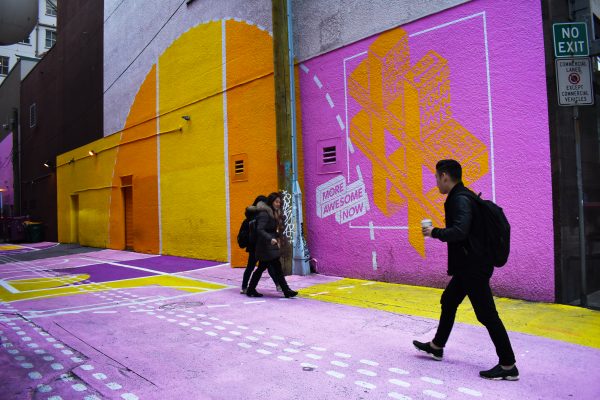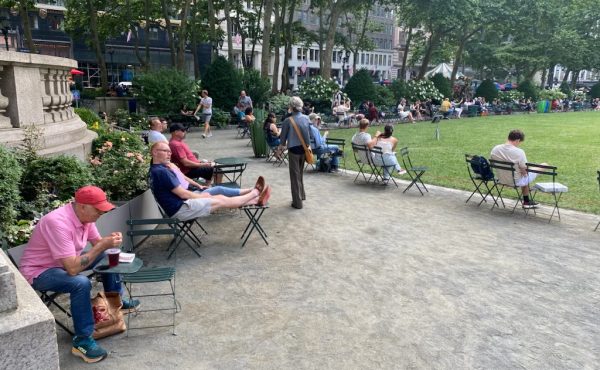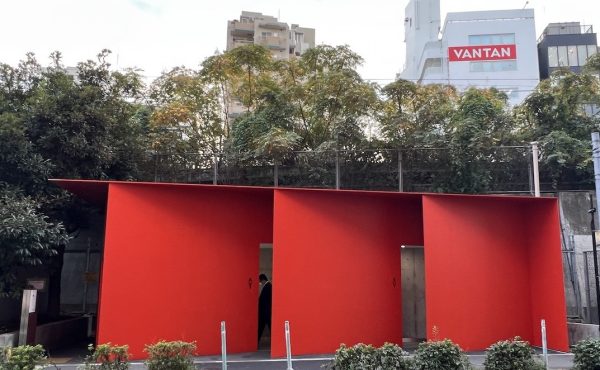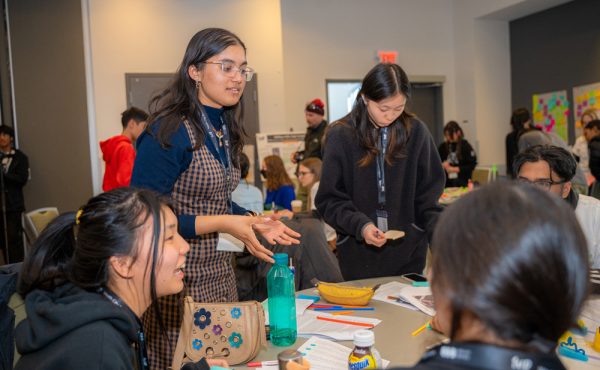There’s a tactic in marketing: surprise and delight. It’s used to attract and engage with customers new and old by interacting with them in unexpected ways, like when the Raptors have a playoff game and there’s a new T-shirt waiting at every seat for ticket holders. It’s a small thing, but a nice thing.
I experienced some surprise and delight last year during a trip to Vancouver. After checking in to the Delta Hotel downtown, I got into my room and opened up the curtains. My view was of Alley Oop, a laneway painted to look like an oversized basketball court using bright pinks and yellows.
It’s a punch of colour that breaks through the city’s grey and the image puts a smile on my face every time I think about it. The City of Vancouver, working with the Downtown Vancouver Business Improvement Association and HCMA Architecture and Design, took existing infrastructure — an otherwise forgettable laneway — and turned it into a surprising and delightful canvas.
Vancouver isn’t the only city to have elements of surprise and delight amidst otherwise mundane infrastructure. There’s a street in Copenhagen where trampolines are built into the sidewalk. And Charlottetown, through its “Adopt a Corner” program, has turned one concrete square’s worth of space at select corners downtown into vibrant pocket-sized flower gardens.
Delight is something Toronto needs more of, particularly the bold, colourful variety, and particularly in its infrastructure. But there’s a tendency to think only big. At the recent Waterfront Toronto Design Review Panel meeting about proposed changes to Ontario Place, Urban Strategies Inc. partner Joe Berridge repeatedly mentioned the need to go big. “If you don’t do the big, you will never get the small,” he said.
While I admire ambition, chasing after only “big” often falls flat. Remember Rail Deck Park? We’re missing out on small projects, those opportunities to inject a dose of delight into everyday, pre-existing spaces.
In Ward 13, shortly after taking office, Councillor Chris Moise launched Toronto Centre Projects, an initiative that encourages community members to propose and find support for local projects. You’ll find pitches for parking, street signage, and park use. I’m pitching some delight in the form of using public art to reclaim laneways in the ward. (And yes, I could use your vote to support the project. It needs 60 votes before it’s brought forward to council.)
This is a rapidly growing ward that feels, along many arteries, like a permanent construction zone as condos go up. We’re just starting to see the effects of the Ontario Line construction by Metrolinx. Toronto Centre is home to a diverse mix of neighbourhoods, from Cabbagetown to Corktown, St. James Town to St. Lawrence. But we could use something that not only offers a reprieve from the construction debris, traffic and transit woes, something that encourages us to get out and explore nearby neighbourhoods in the ward.
Street or laneway art can turn dead space into a gathering place. In a green paper published by Americans for the Arts, a U.S.-based arts advocacy organization, the authors explain that public art “humanizes the built environment and invigorates public spaces,” and importantly that it’s free to access. By making over laneways, we can turn them into venues for neighbourhood celebrations or tourist destinations (and, in this instance, the term “tourist” applies equally to someone from Willowdale and someone from Wales).
It can also make these often poorly lit and neglected spaces safer. There’s an entire approach to crime prevention that has urban design at its foundation. As the International Crime Prevention Through Environmental Design (CPTED) Association explains, this technique uses built and national environments to create community, deter criminal activity and lower the fear of crime.
Art Alley, a project launched in 2014 in downtown Red Deer, Alta., is one such initiative. Once murals were completed, local businesses noticed a new energy in the area. More people started walking because they weren’t afraid anymore, and it actually slowed car traffic.
Vancouver’s Alley Oop has had a similar effect. Data shows visitors to Alley Oop doubled after the art was completed, and that there was a significant shift in perceptions of danger in the alley. Prior to the transformation, 75% of the alley’s visitors were men. Now, men make up 58% of the visitors.
Toronto has done surprise and delight before. WaveDeck at Simcoe and Queen’s Quay, for example, turns an otherwise nondescript path into something fun. So does the Bentway, under the Gardiner near Strachan Avenue, and Underpass Park near Lower River Street. And we can do it again. All we need this time is some paint.
Maryam Siddiqi is a lifestyle writer and editor who focuses on travel and design. She is the former lifestyle editor at The Globe and Mail. Follow her on Twitter on @msiddiqi.
photo by Ana Iammatteo





One comment
I don’t understand how this could be written without mentioning Toronto’s own longstanding Laneway Project, which has been doing this kind of work for many years.